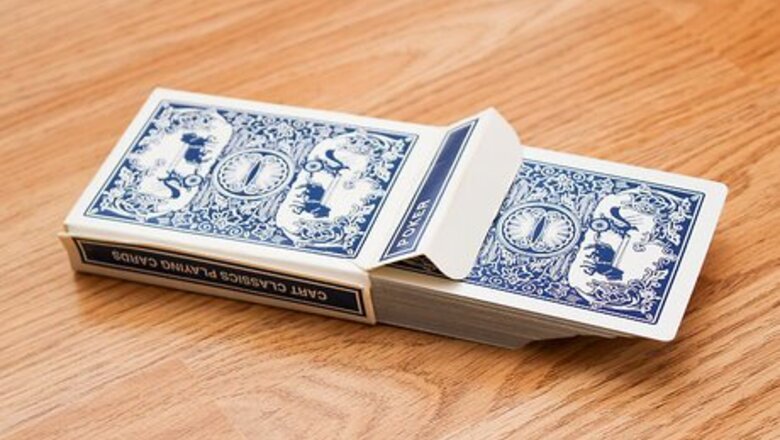
views
Designing Your Game
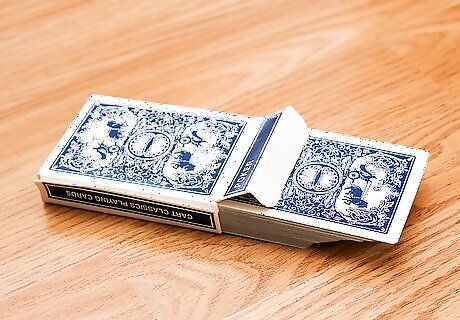
Get a set of cards. You can start out with a standard deck of 52 cards or you can use something more experimental, like a tarot card set. You can even design your own cards. When creating your own cards, you can purchase a sturdy, firm paper and draw your own designs. Alternatively, look online for free design software.
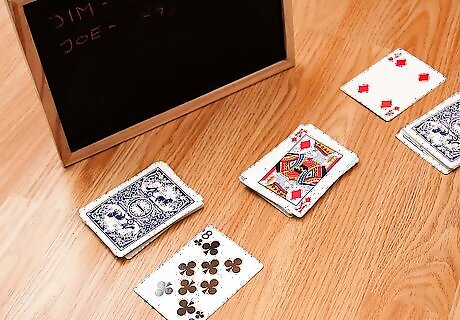
Figure out how to win. The most important thing any game requires is a clear objective, like winning a certain number of hands, collecting all the chips, matching pairs, or getting cards with a certain numerical value in your hand. If you are creating your own card deck, you can even make each card representative of characters, who fight by rolling the dice. One of the important things to ask when picking a goal is how hard is to achieve. If the game is not particularly engaging, people probably won’t want a single hand to last several hours.
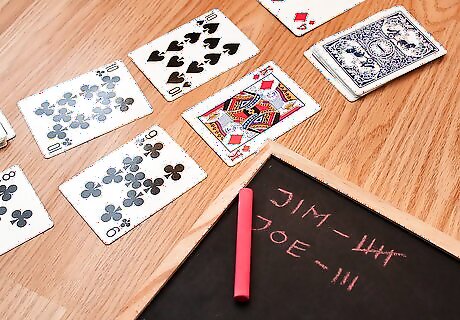
Think about how players interact. In most cases, the real fun in a game is how it encourages you to interact with other people. Generally, card games are meant to be competitive, but sometimes players can cooperate. Some games, like rook, require teams, so that you are both cooperating with someone and competing against another team. Consider the social dynamics that the card game creates or the social skills that it requires. For example, in poker, betting requires that you be able to read other people’s emotions and disguise your own. In rook, you need to be able to communicate with your partner using non-verbal cues. Can you design a game that forces you to interact with the other players in interesting ways? To make things interesting in a competitive game, ask yourself if there is any way you can directly impact your competitors. It can be fun to ruin your opponent’s hand and it can also keep things competitive when one person is falling behind. There are also some games, particularly Solitaire that you can play by yourself. To make this sort of game interesting, it is imperative that you design a system of rules that makes it difficult for you to obtain your end.
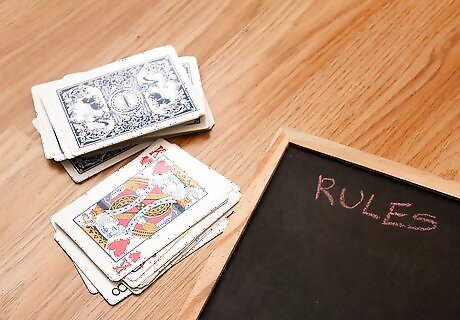
Design the rules. This can be one of the most difficult parts of designing a game. The rules should be make it difficult to obtain the winning conditions that you designed earlier. You want a system of rules that makes the game challenging, without being overly complicated. This is the point at which you really need to ask yourself what you want the challenge to be. Should players be trying to memorize cards that have already been played? Should they be trying to figure out the probability of a particular card coming up? Maybe the game will test reflexes by rewarding the player who can slap a pair quickest when one comes up. A good place to start out is with the rules of games you like. Try to mix and modify rules from other games to make them new and interesting. Although usually you want the rules to be relatively easy to understand, sometimes getting a full understanding of a complex set of rules can also be engaging. If mastering a complex set of rules is the challenge of the game, consider starting with a basic design that is easy to understand, but then adding special situations and maneuvers where those with a full understanding of the rules have an advantage. EXPERT TIP Ashton Wu Ashton Wu Board Game Expert Ashton Wu is a Board Game expert at Shelfside. After delving into the Yugioh tournament community while growing up, Ashton launched himself into the board gaming community in 2014 and went into reviewing board games as a career full-time in 2019. His YouTube channel Shelfside has over 35K subscribers and over 4 million views, assisted by written reviews on the Shelfside website and BoardGameGeek.com. He also consults with gaming companies to build high-quality gaming products. Ashton is a tournament commentator, board game playthrough director, and host of the Shelfside Podcast, where he talks about board games with his business partner, Daniel. He received a Bachelor of Arts in Economics at the University of California, Santa Barbara, in addition to the Technology Management Certificate. Ashton Wu Ashton Wu Board Game Expert Today's card game players prefer fast-paced games. To keep players engaged, design a game that prioritizes impactful turns and avoids dragging on. Shorter games equals more fun - The key to a successful card game is to focus on speed and engagement. Aim to create a game that's easy to understand and play while maintaining excitement.
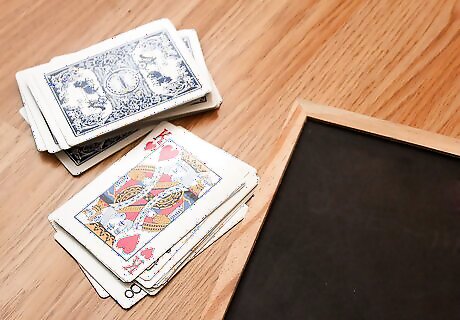
Keep all players in the game. Your game won’t be very engaging if, after a person takes the lead, they are destined to win. You need to design the game so that a player who is down and out can get back in the game. Maybe after a certain point a player can have the option of trading his worst card with the other player. Alternatively, a lot of good games become progressively harder as you approach the end. For example, in the first round you might only be required to get a pair, but in the final round you might need to get three of a kind and a pair. This allows players who are behind time to catch up. One good method is to have the player who is ahead dispose of all of his cards during the course of the game. If he needs to finish the game with only one card in his hand, it’ll be harder for him to match his card with the other card he needs.
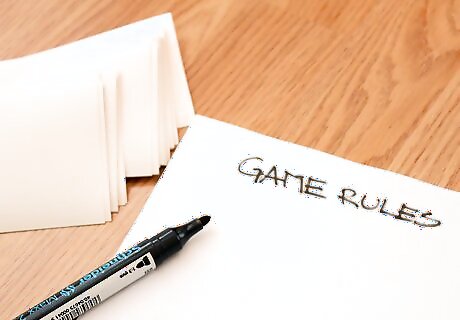
Write a rule-book. It can be easy to forget the rules of a complex game, especially when you’re still working them out. Write them down to make sure that you have a record of what you have come up with.
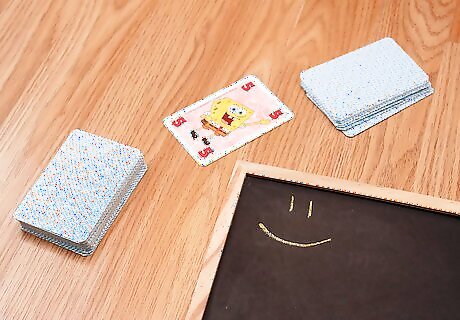
Have fun! Playing isn’t just about having a good time, it’s also part of the creative process. The more you play the more you’ll be able to understand what works and what doesn’t. From there you can make the game better over time, or you can bring what you’ve learned to making your next game.
Building on Tried and True Methods
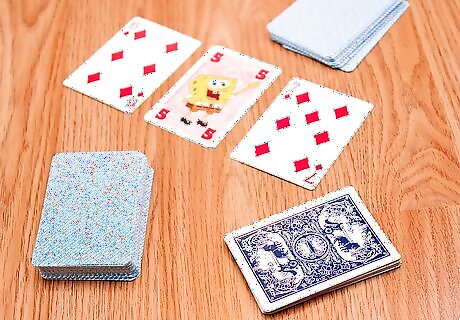
Experiment with a lot of games. A good place to start when designing a game is with understanding what has worked before. Play a lot of a varieties of games to see how they work and what makes the interesting. Find which ones you like and figure out what it is that you enjoy about them. Try different categories of games to determine what your options are. Remember, card games don't necessarily just need to be about cards. You can throw in dice and a board as well.

Try strategy games. Good examples of strategy games include "Risk" and "Settlers of Catan." Strategy games are meant to test intelligence. They often last for an hour or more and involve slowly accumulating an advantage over your opponent by making astute choices. While strategy games are typically about gathering strength over time, to make things interesting you should have a method of winning that is quick and unpredictable. So, for example, in chess you can gain a huge strategic advantage over your opponent by taking their pieces. However, one wrong move can always put you in checkmate, so it is possible for a player to come from behind to win.
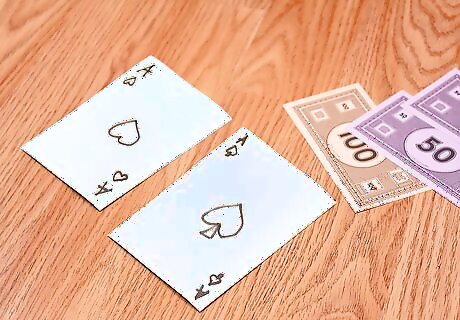
Try betting games. In many betting games, like blackjack and poker, you have very little control over whether you win or lose. The point is to calculate how high your probability of winning is and bet according. Sometimes you can scare your opponent into giving up their hand by betting more than they are willing to pay, effectively allowing you to win on the basis of your interactions with the other player, rather than your actual hand.

Try fishing games. Fishing games, like dominoes or casino, give each player a set of cards that they need to lay down. Sometimes there is a deck that is pulled from randomly to create uncertainly. The objective is usually to find a card that matches one that has already been laid down and thereby either allowing you to get rid of or add to the cards in your hand.
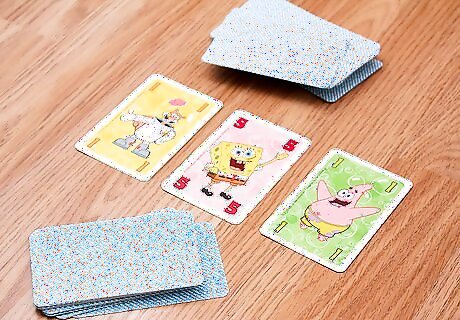
Think about common variations on games. Often, small changes in rule systems can alter a game significantly. Many games are based on such small variations from other games. Common ways to change games include making certain cards wild, taking some cards out of the deck, and adding or subtracting cards from your hand.
Publishing Your Game
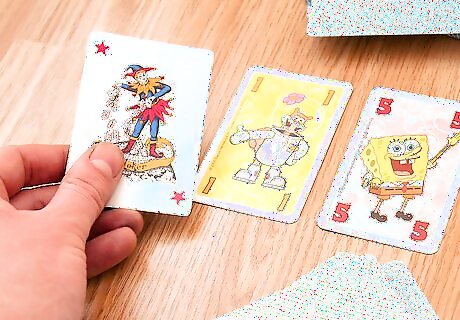
Experiment with your game. Even professional game makers usually start off with a dud. Before you seriously consider publishing a game, play it a lot. Ask other people what they think its strengths and weaknesses are. You might be biased toward believing that it is better than it is. When experimenting make sure that there aren’t any situations where the rules are unclear or simply don’t work. Be sure that games don’t go on for an agonizingly long time or that they don’t stop being competitive before the game is over. When new people play the game, see if they can understand the rules. If it takes more than one game to understand how things work, the rules might be too complicated.

Use design software. If you want to mass produce your cards, a simple drawing won’t be sufficient, though it might be a good place to start. There are free software programs online that you can use to create jpeg image files that can be sent to publishers for easy and affordable production.

Find a publisher. There are now websites like www.gamecrafter.com that will produce card sets made from jpeg images that you send them. The process is affordable, approximately $7-$25 for a single card set. It can even cost less if you order in large quantities. Alternatively, look online for a list of board game conventions. Here you can meet some major publishers who might be interested in picking up your game. However, you will need to approach them with a very professional looking game in hand and a good pitch about what makes your game special.




















Comments
0 comment